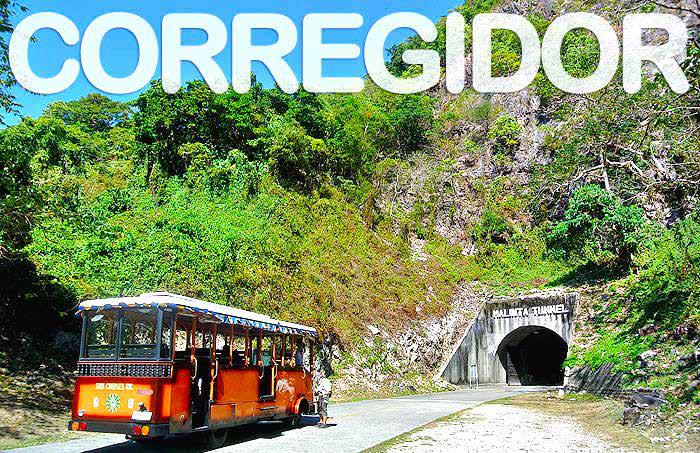
The Battle of Corregidor, fought May 5–6, 1942, was the culmination of the Japanese campaign for the conquest Philippines during World War II.
Between December 24, 1941 and February 19, 1942, Corregidor became the temporary location for the Government of the Philippines. On December 30, 1941, outside the Malinta Tunnel, Manuel L. Quezon and Sergio Osmeña were inaugurated respectively as President and Vice-President of the Philippines Commonwealth for a second term. General Douglas MacArthur also used Corregidor as Allied headquarters until March 11, 1942. The Voice of Freedom, the radio station of USAFFE broadcast from Corregidor, including the famous announcement of the fall of Bataan. In April 1942, one Battalion of the Fourth Marines was sent to reinforce the island’s beach defenses.
In early 1942, the Japanese Army invaded Luzon from the north at Lingayen Gulf and attacked Manila from its landward side. The American and Filipino troops retreated into the Bataan Peninsula, west of Manila Bay. Unable to access food and ammunition supplies, the US and Filipino forces were forced to surrender.
With the fall of Bataan on April 9th, the island bastion of Corregidor, with its network of tunnels and formidable array of defensive armament, along with the fortifications across the entrance to Manila Bay, now remained the last obstacle to the 14th Japanese Imperial Army of Lieutenant General Masaharu Homma. The American and Filipino soldiers on Corregidor and the neighboring islets held out against the Japanese to deny the use of Manila Bay, but the Japanese Army brought heavy artillery to the southern end of Bataan, and proceeded to blockade Corregidor. Japanese troops forced the surrender of the remaining American and Filipino forces at the Malinta Tunnel on May 6, 1942.
Three years later, in February 1945, the recapture of Corregidor was staged. In a 10-day battle, American and Filipino forces wrested back the island fortress from the Japanese.
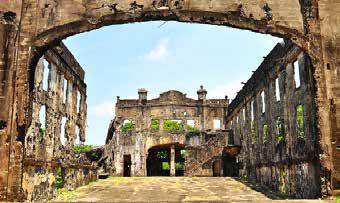
Corregidor Today. After the War, visitors, mostly veterans, came to Corregidor to retrace its history. Today, Corregidor is a monument to freedom and has become a destination for tourists. Among the features of the island are military installations used during World War II. Purposely, the ruins of many of the war-ravaged buildings have not been restored in reverence to the memory of Filipino and American soldiers who died there.
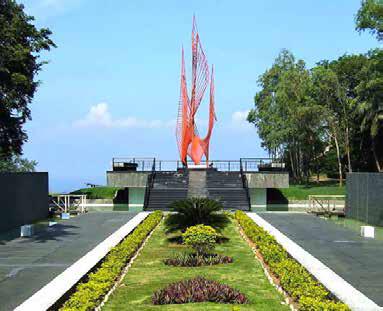
Pacific War Memorial. Standing on the highest part of Corregidor’s Topside is the Pacific War Memorial, which was built by the United States Government to honor the Filipino and American soldiers who participated in World War II. It was completed in 1968 at the cost of three million dollars. The major memorial structure is a rotunda with a circular altar directly under the dome’s oculus through which light falls on the altar during daylight hours. Light lands directly on the altar on May 5 at exactly 12 noon, in commemoration of the surrender of the troops stationed there and the courage they exhibited over 72 days of bombing. Located behind the Memorial is the Eternal Flame of Freedom, a 40 feet (12 m) Corten steel structure commissioned to Aristides Demetrios symbolizing freedom.
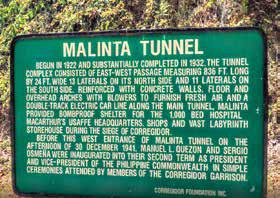
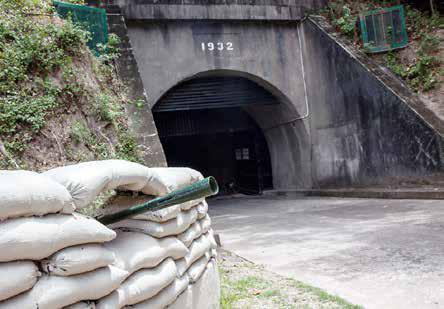
Malinta Tunnel. The Malinta Tunnel, which is the last stronghold of the joint Philippine and American military prior to the Japanese takeover during the World War II, is now home to an audio- visual presentation by National Artist Lamberto V. Avellana of the events that took place on the island, including the reluctant departure of General Douglas MacArthur and the evacuation of the Philippine president Manuel L. Quezon and his family to unoccupied areas of the Philippines and eventually in exile in the United States.
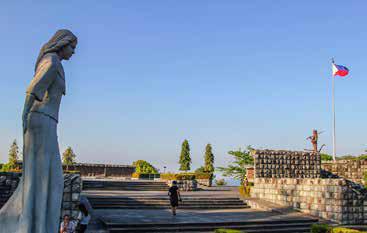
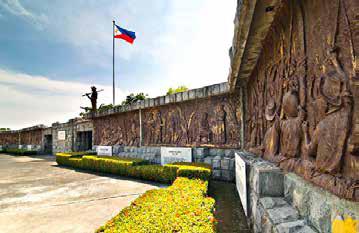
Filipino Heroes Memorial. One of the most recent additions to Corregidor is the Filipino Heroes Memorial located in the Tail End. This 6,000-square meter complex has 14 murals depicting heroic battles fought by Filipinos from the 15th century up to the present day. It was designed by Francisco Mañosa, while the murals and a statue of a Filipino guerrilla were sculpted by Manuel Casas. The complex was inaugurated by President Fidel V. Ramos on 28th August 1992.
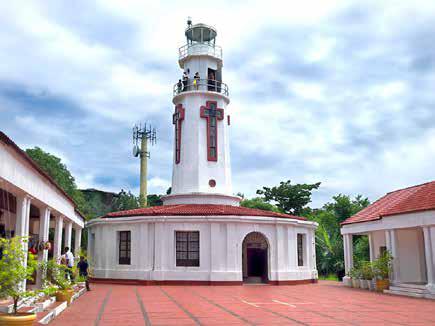
Corregidor Lighthouse. The lighthouse on Topside is one of the oldest landmarks in Corregidor, first lit in 1853. In 1897, the defective lighting apparatus was changed, extending the range to 33 miles (53 km). The grounds and keeper’s dwellings were further improved during the American occupation. During World War II, the lighthouse was damaged during the siege of Corregidor. The lighthouse was totally reconstructed in the 1950s with a different design and stands on the same spot where the first lighthouse once stood. The whole lantern of the lighthouse was recently replaced by the Philippine Coast Guard to run on solar power.
Photo Credits:
1) Bus near tunnel: Angel Juarez
2) Corregidor Ruins: insights.loloo.com
3) Pacific War Memorial: 125tour.com
4) Malinta Tunnel: Michael Turtle
5) Filipino Heroes Memorial : thepoortraveler.net & lakadpilipinas.com
6) Lighthouse: Barbara Weibel

